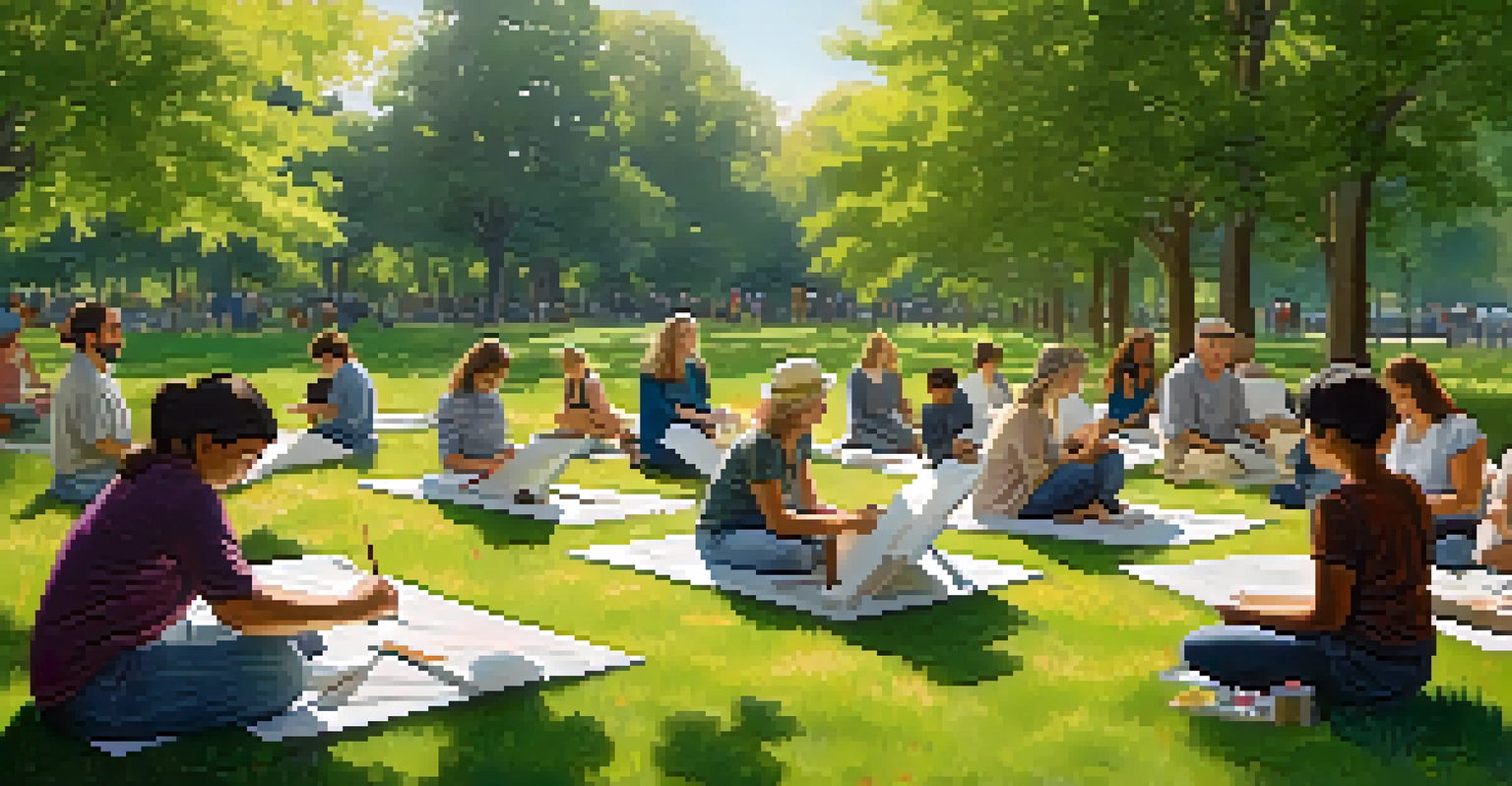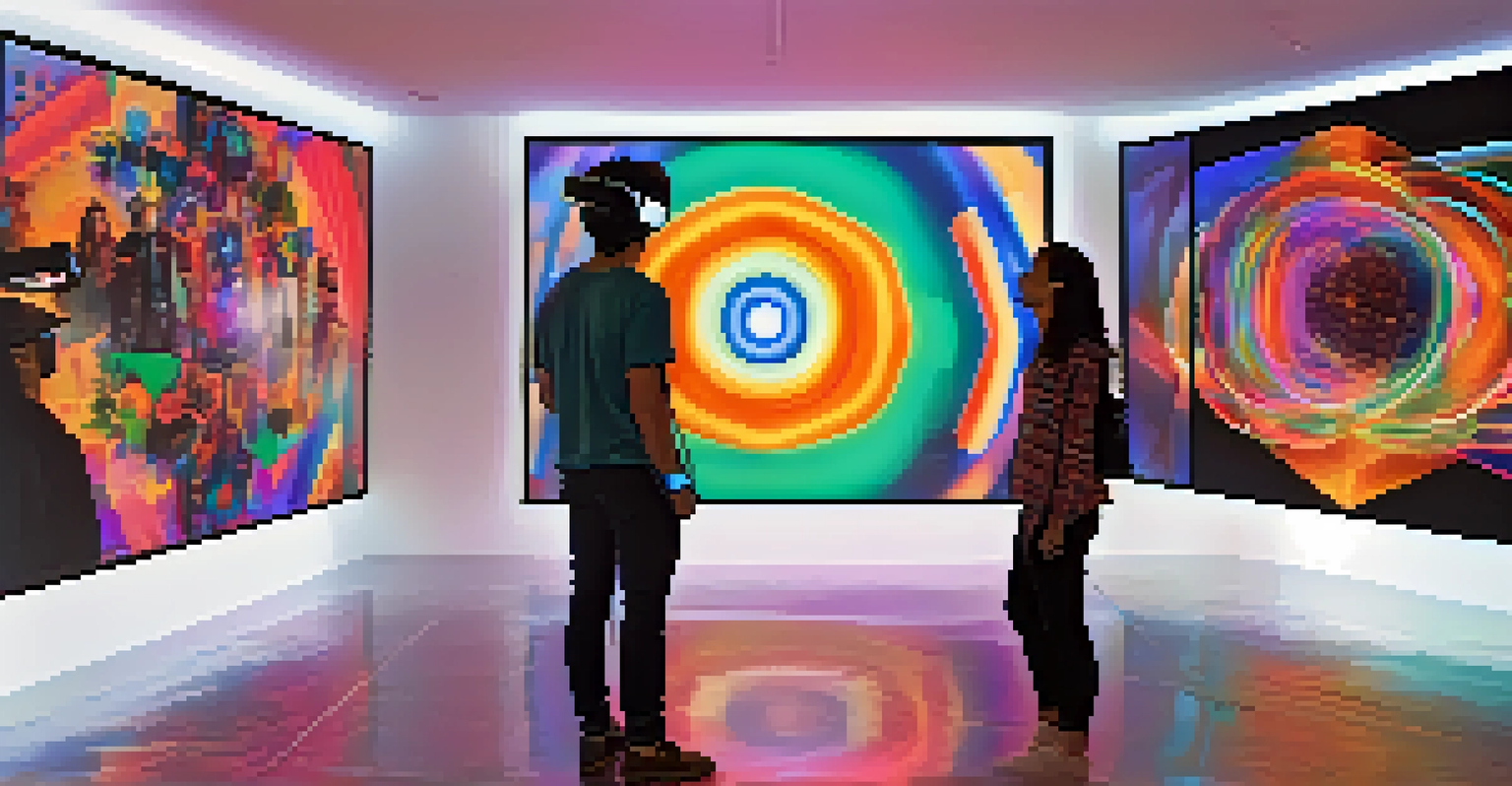The Role of Art in Shaping Public Perception of Social Issues

Art as a Mirror to Society's Challenges
Art often reflects the realities of society, acting as a mirror to social issues. Through various forms, such as paintings, music, and theatre, artists capture the struggles and triumphs of everyday life. This reflection invites audiences to confront uncomfortable truths about their communities and the world at large.
Art is not freedom. It is a necessity.
Take, for example, the powerful imagery in Picasso's "Guernica," which illustrates the horrors of war. Such pieces not only evoke strong emotional responses but also serve as historical commentaries that inform public discourse. By showcasing these realities, art encourages viewers to engage with pressing issues they may otherwise ignore.
Related Resource
In this way, art becomes a catalyst for conversation, prompting society to examine its values and priorities. It compels individuals to think critically about the challenges they face, challenging the status quo and inspiring change.
Art as a Tool for Advocacy and Activism
Artists have long used their platforms to advocate for social change, making art a powerful tool for activism. Through thought-provoking works, they bring attention to issues like climate change, inequality, and human rights. This advocacy transforms personal experiences into collective movements that resonate widely.

Consider the iconic protest songs of the 1960s, which galvanized a generation to fight for civil rights and social justice. These melodies not only entertained but also educated listeners on critical issues, fostering a sense of unity and purpose. Similarly, street art has emerged as a vibrant form of protest, giving voice to the marginalized in urban spaces.
Art Reflects Societal Challenges
Art serves as a mirror to society, prompting discussions on pressing social issues and encouraging critical reflection.
By harnessing the emotional power of art, activists can reach audiences on a deeper level. This connection often mobilizes people to take action, whether through advocacy, donations, or participation in movements, highlighting art's potential to inspire tangible change.
The Emotional Power of Art in Raising Awareness
Art has a unique ability to evoke emotions, making it an effective medium for raising awareness about social issues. Whether it’s through a haunting film, a moving poem, or a striking sculpture, art can stir feelings that compel individuals to think and act. This emotional resonance often makes the message more memorable and impactful.
The purpose of art is not a rarified, intellectual distillate; it is life, intensified, brilliant life.
For instance, the documentary "13th" by Ava DuVernay explores racial inequality in the United States through a compelling narrative. The combination of visuals and storytelling captivates viewers, urging them to confront systemic injustices. By tapping into emotions, art fosters empathy, encouraging audiences to relate to experiences outside their own.
Related Resource
Ultimately, the emotional power of art can bridge gaps between different communities. By creating shared feelings of urgency or compassion, artists can unite people around common causes, promoting understanding and solidarity.
Art as an Educational Resource for Social Issues
Art serves as a vital educational resource that can enhance understanding of complex social issues. It provides context and perspective, making intricate topics more accessible to a broader audience. Through creative expression, artists break down barriers to knowledge and invite dialogue.
Take, for example, the use of graphic novels in discussing mental health. Works like "Marbles" by Ellen Forney illustrate the struggles of living with bipolar disorder, offering insights that traditional texts may lack. This visual storytelling approach can resonate with readers who might otherwise shy away from dense academic literature.
Art Fuels Advocacy and Activism
Through emotional resonance, art mobilizes individuals to engage in social change, transforming personal narratives into collective movements.
By engaging with art, individuals often discover new perspectives and insights that encourage critical thinking. This educational aspect of art empowers people to not only understand social issues but also to become advocates for change.
The Role of Digital Art in Social Movements
In today’s digital age, art has taken on new forms, with technology playing a significant role in social movements. Social media platforms allow artists to share their work widely and engage with global audiences. This digital landscape has transformed how art is created, distributed, and experienced.
For instance, viral campaigns like #BlackLivesMatter utilize graphic design and visual art to convey powerful messages of justice and equality. These digital artworks often prompt discussions and mobilize supporters, demonstrating the effectiveness of online platforms in amplifying social issues. The immediacy of digital art allows for rapid response to events, making it a dynamic tool for activism.
Related Resource
Moreover, digital art can reach diverse demographics, breaking geographical barriers and fostering a sense of global community. This interconnectedness enhances the potential for collective action, illustrating how digital art can shape public perception on an unprecedented scale.
Art and the Challenge of Representation
Representation in art is crucial, as it influences how social issues are perceived by the public. When diverse voices are included in artistic narratives, they enrich the conversation around these issues. However, the challenge remains to ensure that all communities are authentically represented in art.
For example, the portrayal of marginalized groups in film and literature can significantly impact societal attitudes and beliefs. When these narratives are told from authentic perspectives, they can challenge stereotypes and foster greater understanding. Conversely, misrepresentation can perpetuate harmful myths and hinder progress.
Digital Art's Role in Social Change
The rise of digital art amplifies social movements, allowing for rapid sharing and global engagement on critical issues.
Thus, artists must navigate the complexities of representation while striving to tell stories that resonate with authenticity and respect. This responsibility underscores the importance of inclusivity in the arts to shape a more informed and compassionate society.
The Future of Art in Social Change
As we look to the future, the role of art in shaping public perception of social issues is poised to evolve. Emerging technologies and mediums will continue to transform how art is created and consumed, opening new avenues for engagement. This evolution presents both opportunities and challenges for artists and activists alike.
For instance, the rise of virtual reality (VR) experiences allows audiences to immerse themselves in narratives that highlight social issues. This immersive approach can foster empathy in ways traditional art forms may not achieve. As these technologies develop, they could redefine our understanding of art's potential impact on social change.

Ultimately, the future of art will depend on the commitment of artists to address pressing social issues. By embracing innovation while staying true to their mission, artists can continue to inspire, educate, and mobilize the public, ensuring that art remains a vital force for change.